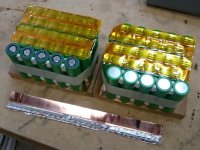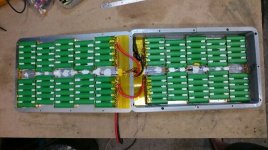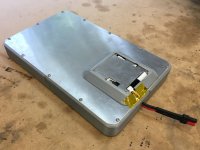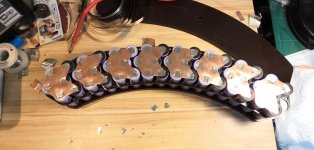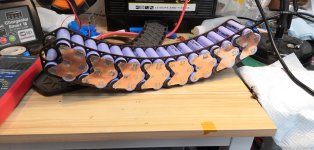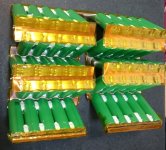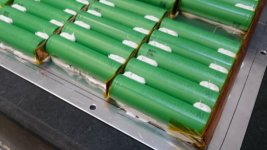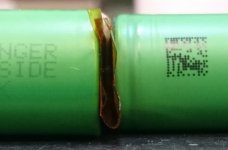serious_sam said:What current (continuous and peak) do you plan per cell ?devmonkey said:0.1mm copper is not quite enough for my usecase
22A per cell for 30s bursts, about 10-15A continuous (2 min bursts) although the whole system will be off for most of the flight. These are 40T cells.
The purpose of placing pure nickel down first is to get an excellent weld to the cell. Then placing copper over the cell tips and bending the previously welded nickel over the top of the copper is because the weld from the nickel into the copper is 100x better than the weld from the copper into the layer of nickel below it, this is also true with the 0.1mm copper and is obvious when you look at the path the weld has to take through the layup.
Basically from the hundreds of test welds I've now done I would not trust the welding in one shot from nickel through 0.2mm copper to the cell not to fall off eventually. I would probably trust it with 0.1mm copper but only just and then you are limited to 0.1mm copper as you cannot get another layer to reliably stick.
The method i'm proposing is a compromise but is reliable with the tests i've run and the resultant layup is extremely strongly adhered together.
The alternative for this pack would be 4 layers of nickel but I don't believe the upper layers are particularly effective current carriers.


